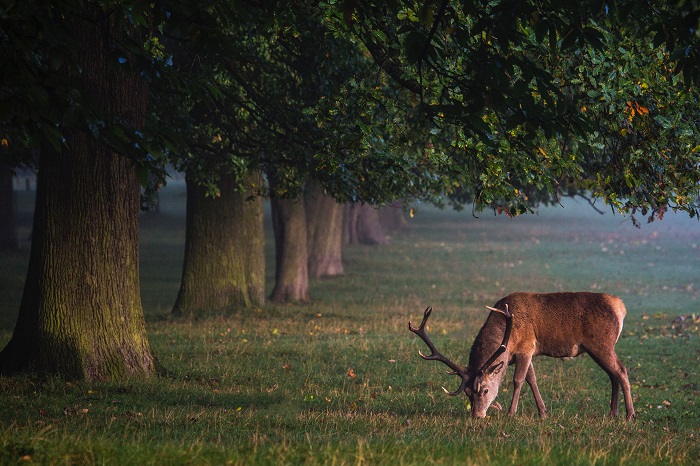Dublin deer herd first in Europe to be infected with COVID-19 virus
UCD scientists have discovered that deer at the Phoenix Park in Dublin are the first in Europe to be infected with the COVID-19 virus, most likely a result of regular human contact. The research has been highlighted by Science from the pre-print article "First Eurasian cases of SARS-CoV-2 seropositivity in a free-ranging urban population of wild fallow deer”.
Dr Nicola Fletcher, Assistant Professor and Ad Astra Fellow at UCD School of Veterinary Medicine and UCD Conway Institute, has been monitoring the Phoenix Park deer for the presence of SARS-CoV-2 (the virus that causes COVID-19) since 2020.

Photo by Diana Parkhouse, Unsplash
“Our study revealed that in 2022, 57% of the animals we tested had antibodies to SARS-CoV-2. This is the first time European deer have been demonstrated to have anti-COVID antibodies and the first deer species, apart from US white-tailed deer, with demonstrated previous exposure to SARS-CoV-2.”
The team's research indicates a change in host tropism as new variants emerged in the human reservoir. This underlines the importance of continued wildlife disease monitoring and of limiting human-wildlife contacts.
Dr Fletcher warned, “Animals with anti-SARS-CoV-2 antibodies were known to take food from people who visit the Phoenix Park. This highlights the importance of people not feeding these deer, due to the risk of ‘reverse zoonosis’ - transmitting diseases from humans to animals which could then transmit back to people.”
The study is a collaboration between Dr Fletcher’s laboratory at UCD School of Veterinary Medicine, and Dr Simone Ciuti’s team at UCD School of Biology and Environmental Science who have been studying the behaviour of the Phoenix park deer for many years. Researchers at the UCD National Virus Reference Laboratory, UCD Centre for Experimental Pathogen Host Research (CEPHR) and UCD Conway Institute also contributed to the findings.
Read the Science article here.
Social Media Links